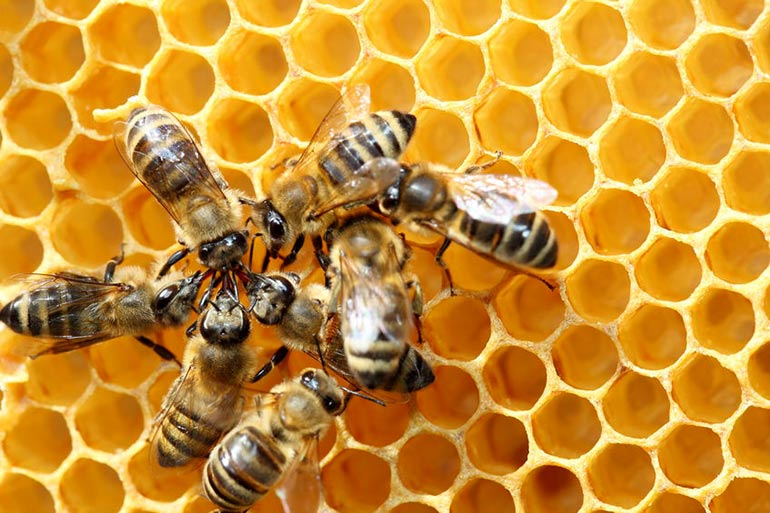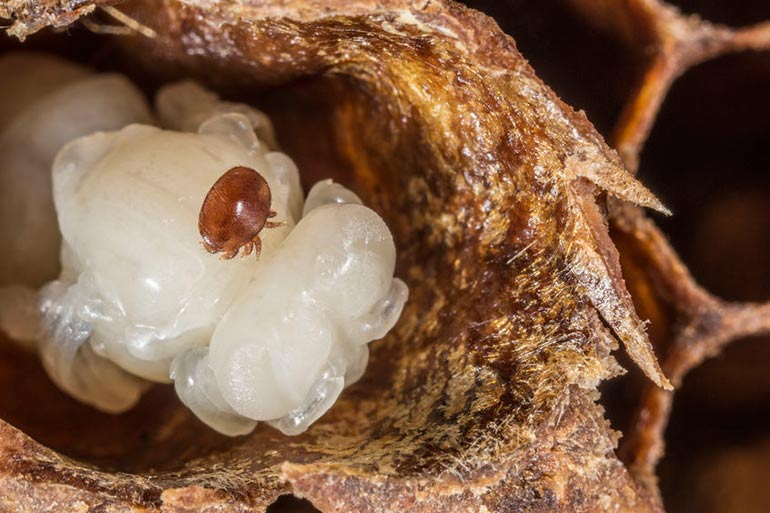Refrigeration used to fight bee colony collapse
28th April 2019
USA: Refrigeration is being used by researchers to help fight the parasitic varroa mite, one of the suspected causes of bee colony collapse.
Beekeepers have been reporting the mysterious and sudden disappearance of bees since the late 1990s. Known as colony collapse, it is not known for sure the causes of these bee extinctions, but scientists have pinpointed pesticides, loss of habitat and parasitic infections amongst the reasons.
Scientists at Washington State University (WSU) are targeting the varroa mite, a pest that affects the honey bee and its brood, weakening the bees’ immune systems, transmitting viruses and siphoning off nutrients. They’re said to be a huge factor in colony collapse around the world. A significant mite infestation will lead to the death of a honey bee colony, usually in the late autumn through early spring.
Various treatments are available to use against the mites but, according to Brandon Hopkins, assistant professor of entomology and manager of the WSU bee programme, these are generally only effective for three days. “But a lot of mites live in the brood, which are under a wax cap that treatments can’t touch. Those bees hatch out and are already afflicted.”
Bees don’t truly hibernate, but they do change their behaviour in winter. Queens stop laying eggs, so no new ‘brood’ is created at that time.

Last August, WSU researchers put 200 honey bee colonies into refrigerated storage. This is a time when bees are still active, but have finished making honey for the season, and there are no crops that require pollination. It’s also when beekeepers normally do a round of mite treatments.
By placing colonies in refrigerators, the queen stops laying new eggs, which stops the production of brood. When the bees come out of refrigeration, there is no ‘capped brood’. At that point, Hopkins and his team apply a varroa treatment on the adult bees.
The initial results were said to have been overwhelmingly positive. Researchers found an average of five mites per 100 bees on the control colonies (not refrigerated) one month after the normal three-cycle mite treatment.
The refrigerated colonies had an average of 0.2 mites per 100 bees one month after the single mite treatment.
“That’s a significant decrease,” Hopkins said. “Refrigeration is expensive, so we need to do more work to prove the cost is worth it for beekeepers, but we’re really excited so far.”
Additionally, the infestation levels varied tremendously from colony to colony in the control samples. Researchers say that’s because of the difficulty in treating colonies consistently over three cycles. The colonies that had the refrigeration treatment are said to have had consistent mite numbers with little variation.
“Beekeepers generally have two periods of time for mite treatments, before the bees make honey and after,” Hopkins said.
Once bees have mites, the infestation increases during the pollination and honey production months.
“But if they can start with low mite numbers, the bees are healthier during the honey production period,” Hopkins said. “A lot of varroa damage comes while the bees are making honey.”
This spring a commercial Idaho beekeeper, donated 100 honey bee colonies to do a refrigeration study just like the one carried out last year.
“It’s a big risk for them,” Hopkins said. “But if it works, beekeepers would have significantly better varroa control while using fewer chemicals. And they’ll have better colony survival during the following pollinating season.”
Nobody really knows how bees will react to being put back into their winter mode in what is normally the middle of their active season, he said. But that’s what science is all about. And if this works, it could be a major and environmentally sound victory in the great varroa mite battle that beekeepers have been waging for decades.
“We’re hopeful,” Hopkins said. “We won’t have results back for several months, but we’re excited we may have a way to help beekeepers keep their colonies strong and stable.”







